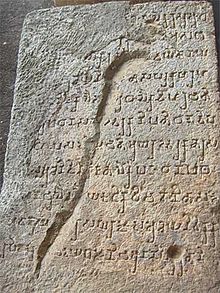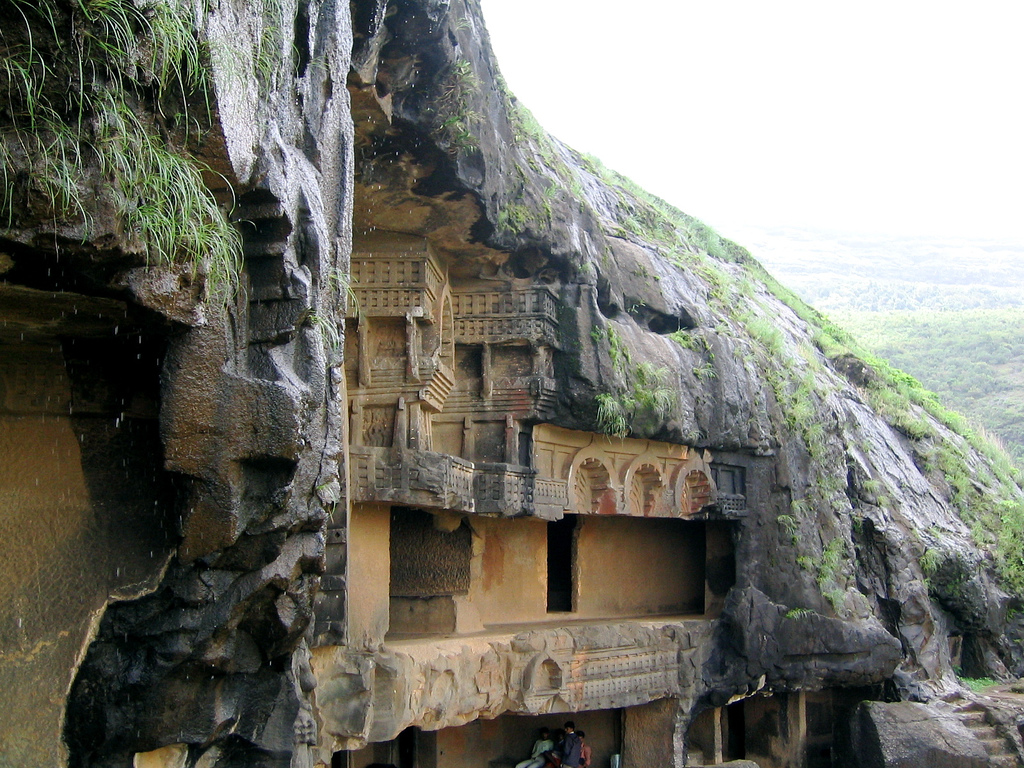As a result of knowledge gained in India in the past five years, we now know certainly that the assertions made by an eminent and respected scholar of Indian & Southeast-Asian Buddhism (Fragile Palm Leaves Foundation, Bangkok) at the First Global Congress on Buddhist Women that:
(paraphrased) 'not a single one of the ancient bhikkhuni sangha monasteries in india has ever been found nor remains' is seemingly incorrect. And thus, the assumption he stated based upon these statements: 'thus, we may reasonably assume that the Bhikkhuni Sangha in india was both small, not-well-supported and short-lived' is also seemingly incorrect and no longer tenable.
(paraphrased) 'not a single one of the ancient bhikkhuni sangha monasteries in india has ever been found nor remains' is seemingly incorrect. And thus, the assumption he stated based upon these statements: 'thus, we may reasonably assume that the Bhikkhuni Sangha in india was both small, not-well-supported and short-lived' is also seemingly incorrect and no longer tenable.
"The Junnar- Śivnērī site provides a very crucial reference to the existence of a women's monastery (Bhikkhunī Upāssaya) in Deccan. Patibhādak Girībhutī, and his wife, Sivapālnikāy, donated a permanent endowment for the Dharmōttariya women's monastery, which should be in the vicinity of the ancient town of Junnar."
--Dr. Rupali Mokashi
A little more than one month past, i also had the honor to set foot on the stones of the ancient theravadan bhikkhuni sangha monastery at Bhaja (Bhaje) in Maharashtra, India. Bhaja is one of the main rock-cut cave monasteries in Aurangabad, and was developed over a seven hundred year period with the sponsorship of generation after generation of wealthy merchants. It housed the Indian Bhikkhuni Sangha for more than 1,000 years. See the Bhaja Leni (Caves) here on the Columbia University website, where the image above is also from.
It's near neighbor Karle Caves, bears many rock-cut donative inscriptions featuring Buddhist monastic women from the 2nd century BCE through the 2nd century of the Common Era, a period of roughly five hundred years.
"Kārlē
1. An inscription on the base of a veyikā to the left of the central door of the Great Caitya Hall records the donation of a rail by Bhikkhunī Kōdī, the mother of Ghuṇika. (Burgess- Indraji 1881:35 & Epigraphia Indica, VII, p. 1-12 and Epigraphia Indica, X, p. 119, n. 1104)
2. An inscription on the belt of a rail pattern on the inner face of the sill of the largest window of the Great Caitya Hall, records the donation of Bhikkhunī Asādhmitā (Burgess- Indraji 1881:33& Epigraphia Indica, X, p. 118, n. 1098, and Epigraphia Indica, VII, 1-12)
3. An inscription in a recess over a water cistern at the end of Cave Thirteen records that women disciples (antēvāsinī) of a bhadanta (teacher) donated a cave and a water cistern. (Burgess- Indraji 1881:37 & Epigraphia Indica, X p. 120, n. 1107) As the record is much mutilated, only the name of Antēvāsinī (pupil) Usabahā can be read.
 |
| Rock-cut Inscription at Kanheri (Skt: Krishnagiri) Caves North of Mumbai |
The Kanheri (Skt: Krishnagir=Black HIlls) Caves off the Arabian Sea on India's west coast just north of Mumbai in Sanjay Gandhi National Park are also an especially important site for women in Buddhism. Inscriptions on the Kanheri Caves walls show lineage succession within the Bhiksuni Sangha from teacher to student over monastic generations.
"...these caves date from 1st century BC to 9th century AD. The earliest are 109 tiny rock-cut cells, carved into the side of a hill. These are spartan and unadorned. Each cave has a stone plinth for a bed. A congregation hall with huge stone pillars contains thestupa, a Buddhist shrine. Farther up the hill are the remains of an ancient water system, canals and cisterns that collected and channelled the rainwater into huge tanks."
The Kanheri Caves show layers of occupation over time. It appears to be an originally Theravada cave monastery, that later also become a Mahayana and Vajrayana shrine. In addition to the simplicity of the cave monastery and stupiary, there are shrine images of Avalokitesvara Bodhisatva in Cave 41, as well as the female form Bodhisattva Tara.
These inscriptions, memorializing dedications made by bhiksunis or on their behalf, have been translated from the Kanheri Cave stone:
"Donations of Buddhist Women Religious at the Rockcut Caves in Deccan:
The votive inscriptions in the rock-cut architecture of ancient Deccan have recorded the names of many bhiksunis and their teachers. They allow us to glean information about the Bhiksuni Sangha in Western India during the early centuries of Christian era. Though much scholarly literature is available on the rise and growth of Buddhism in ancient India through literary and archaeological data, the role of women as believers in the Buddhadharma, actively propagating Buddhism in ancient India in general and Western India in particular, needs more attention. In the superstructure of power and patronage, the role of bhiksunis as benefactors of Buddhism needs to be highlighted. These monastic women also showed a vision of immortalizing the details of the donations in which they participated by engraving them in the caityas and vihāras, and by selecting visually more accessible surfaces.
Seventeen epigraphs that document the donations of bhiksunis at Kānhērī, Kārlē, Kuḍā, Paunī, Junnar , Pitaḻakhōrē, and Śēlāravāḍī caves have been evaluated in this paper (see name below).
Kānhērī (Burgess Fergusson 2000:348)
In Cave Fifty-four, the donation of the nun Therī Antēvāsinī Pavaītikā’ Pōṇakiasaṇā (a senior student of woman Preceptor Ponakiasana) , her sister (name not mentioned), and brothers who are identified as sramaṇa (monastic recluses) is recorded. Pōṇakiasaṇā was the disciple of Thēra Bhadanta Ghōṣa . She donated the leṇa (cave) and pāṇīyapōḍhī (water cistern) for the welfare and happiness of the whole world. Pōṇakiasaṇā has another title, therī (elder bhikkhuni), indicating her superior status in the order. She was involved in arrangements for the donation of 200 pieces of currency called Kārṣapaṇa as a perpetual endowment for the monastery. Out of the interest accrued thereon, one-sixteenth share was meant for the clothes of the monastic community. (Gokhale1991:88 & Epigraphia Indica, X, p., 105, n. 1006)"
 |
| Kanheri Caves Monastic Residential Area | Photo courtesy Jurate Nair |
Further donative inscriptions are then listed in brief. As the area had a strong monsoon season and a period of seasonal drought, both water channeling and water storage and collection was of great importance. The ancient permaculture-like natural water system still works today, in absence of residents. Note the repeated donations of both caves and water cisterns.
"1. In Cave Ninety-eight, the donation of Bhikkhunī Damīlā is recorded. She donated a cave and a water cistern. (Gokhale1991:147 & Epigraphia Indica, X p., 106, n. 1014 )38
2. In Cave Twenty-two, the donation of a water cistern by a bhiksuni disciple of Bhadanta Sagha addressed as Antēvāsinīya (pupil) of Pavajitīkāyā (Pali: Pavattini=woman preceptor/pabbaja teacher)____ (name lost) has been recorded. (Gokhale 1991:77)
4. In Cave Ninety-three, donation of a water cistern by Jamadēvīkā, daughter of a goldsmith, Sivatana, along with Pavaītīkā Jamanasā has been recorded. (Gokhale1991:147)
5 In Cave Sixty-five, a leṇa (cave) and water cistern has been donated by Pavaītīkā (woman preceptor) Sāpā , who identifies herself as the daughter of Kulapriya Dhamaṇak of Dhenukākaṭ. She herself was the pupil of the revered Thēra Bodhika. Sāpā’s sister, Ratīnikā (no monastic attribute suggests that she was a laywoman), and many relatives (nātīsambandhī) were co-donors. (Gokhale1991:91) This donation for the Buddhist Aparāsēliya sect was expected to earn puṇya (religious merit) for the parents of Pavaītīkā Sāpā.
6. Cave number eighty-one, records the donation of a cave by merchant Navinaka and his mother Pavaītīkā (woman preceptor) Damāryā for the welfare of all. (Gokhale 1991:102)."
--adapted from:
Unveiling Bhikkhunis in Oblivion: What Deccan Cave Inscriptions Reveal about the Ancient Bhikkhuni Sangha Epigraphical evidence for the pivotal role bhikkhunis played in preserving the Dhamma.
by Dr. Rupali Mokashi
From these inscriptions, we note the presence of a number of Buddhist women monastic preceptors, their students, and their own teachers. It is clear that bhiksunis could be students of both bhiksu and bhiksuni teachers, but that their preceptors were women.
See the video "Kanheri Caves Decoded" here.
 |
| Kanheri Caves in Forest Photo by Indianature |
Getting there
The national park is one kilometre from Borivli station.
Entry fee to the park is Rs 20 per head.
Park timings: 7.30 am to 7.30 pm (the earlier you go, the better it will be)
The first Kanheri bus service starts at 9 am. Ticket costs Rs 20 one-way.
The national park is one kilometre from Borivli station.
Entry fee to the park is Rs 20 per head.
Park timings: 7.30 am to 7.30 pm (the earlier you go, the better it will be)
The first Kanheri bus service starts at 9 am. Ticket costs Rs 20 one-way.

Nice Article! Thanks for sharing with us.
ReplyDeleteBuddhist Tour India